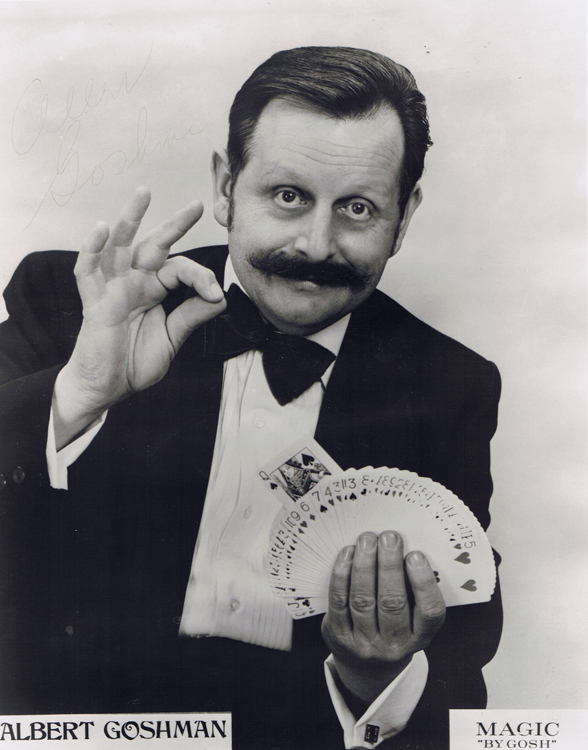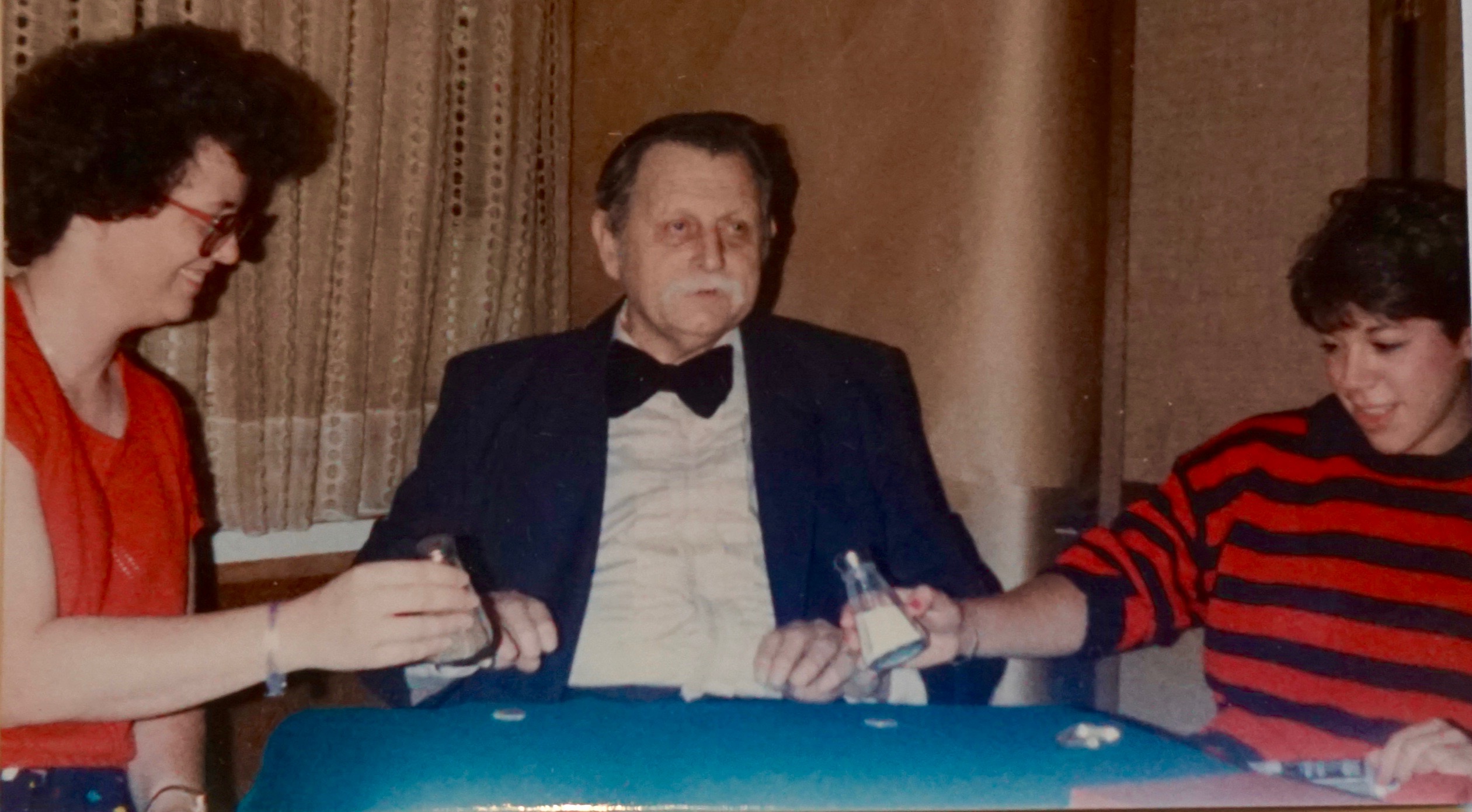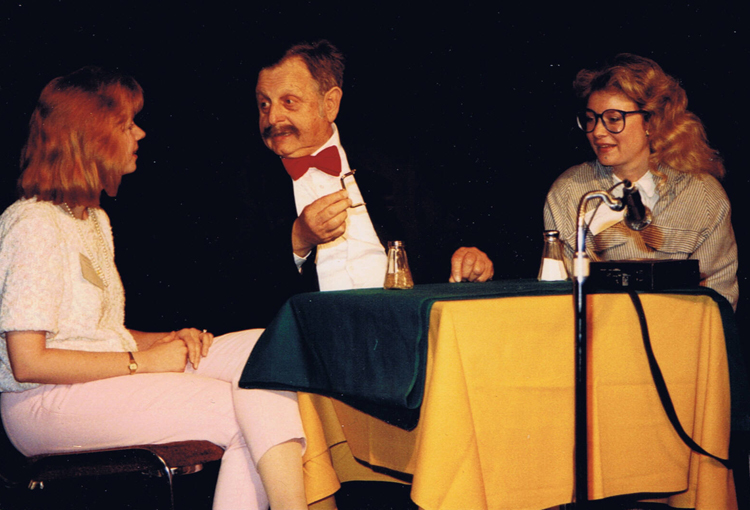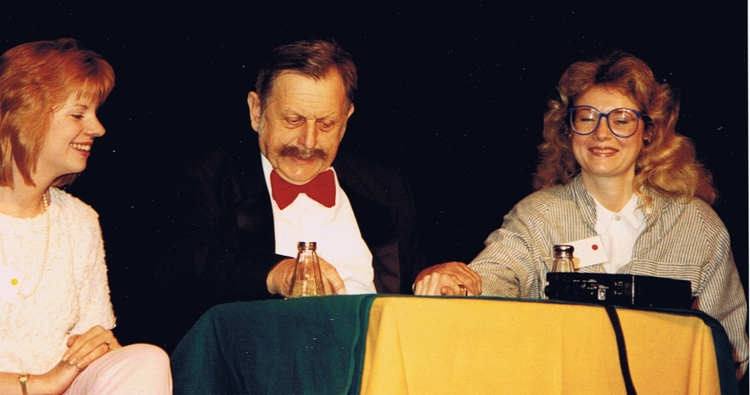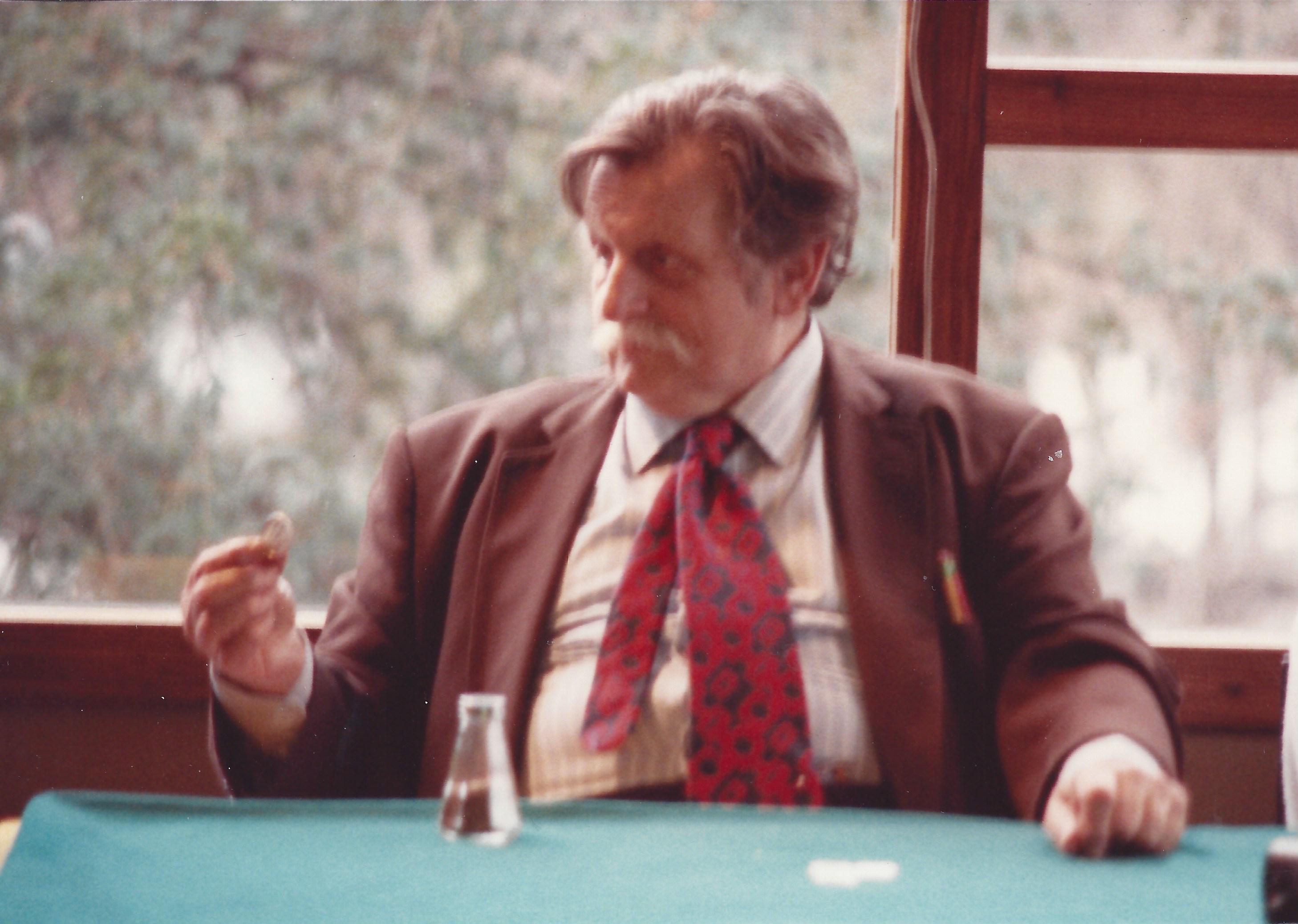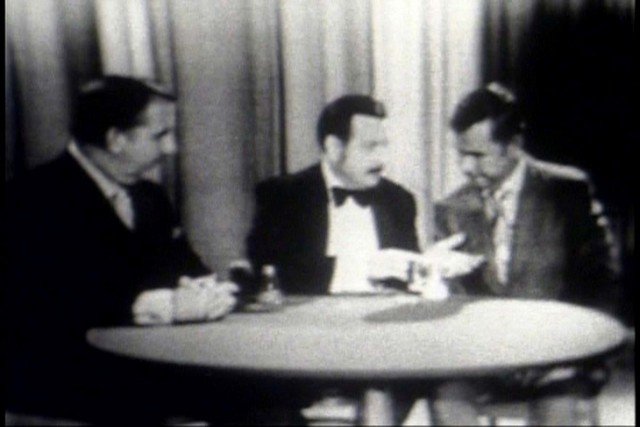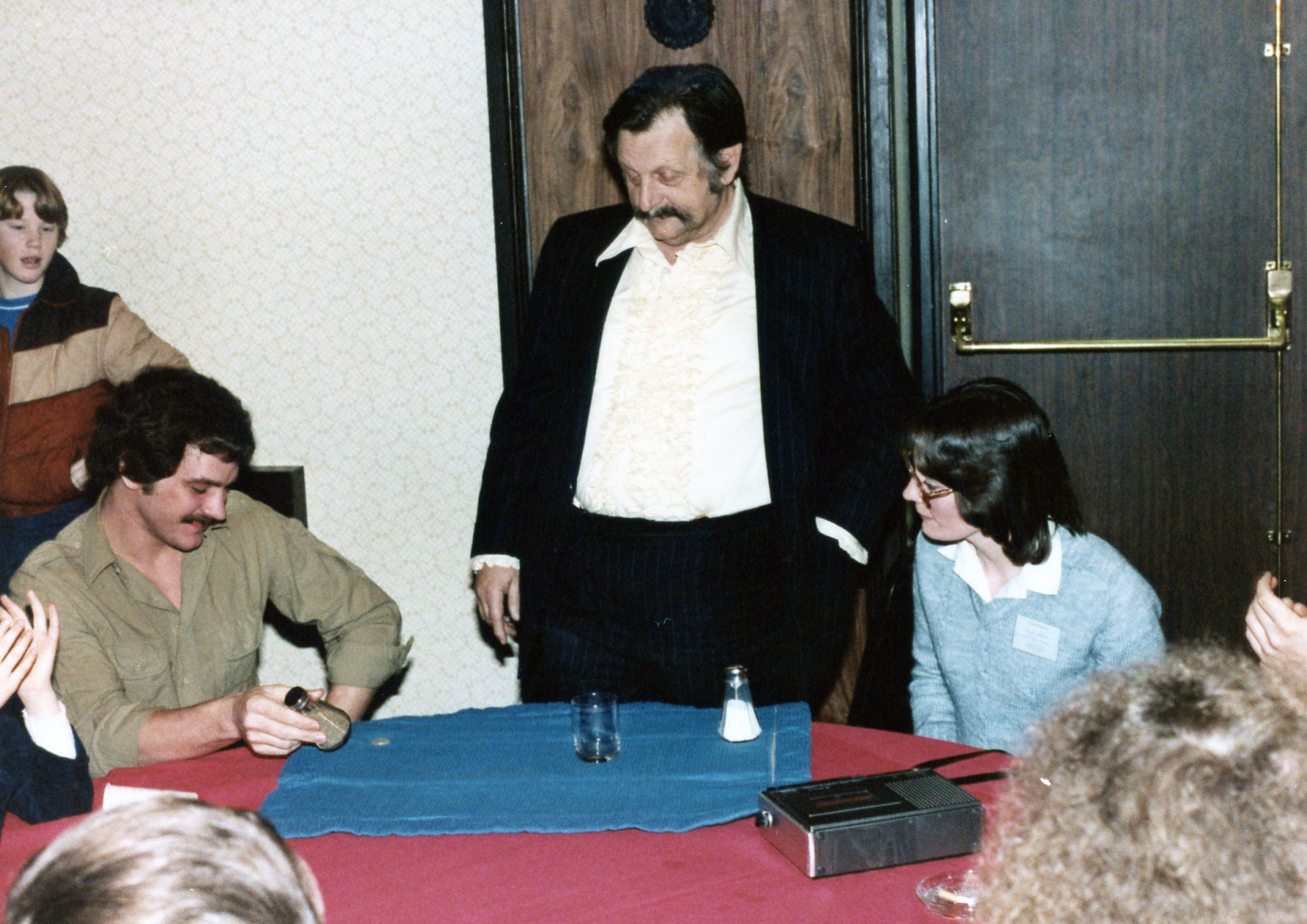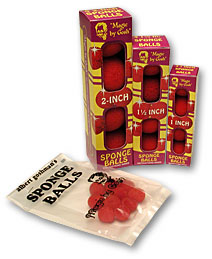MAGIC MENTOR MONDAY: Albert Goshman
November 16, 2015
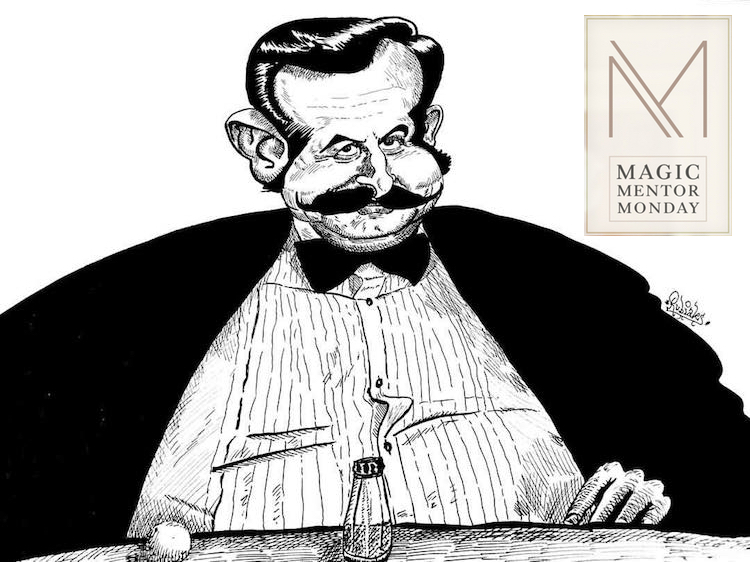
Illustration by Juan Luis Rubiales
Welcome to MAGIC MENTOR MONDAY. In this weekly series, I introduce you to my magic mentors – people who have inspired me to become a better magician. Each Monday you’ll meet someone who has offered advice, or acted by example, to help steer my career.
Some of these people are alive, others no longer with us. Some are famous, others not so much. The beauty of mentorship is that you don’t necessarily have to meet your mentor face-to-face, nor even live during the same time in history. Many of the people who motivated me were alive a century before I was born! By reading classic books, old newspapers, and magazine articles, I’ve tracked down stories about their lives and work that continue to inspire me to become a better entertainer.
My “big three” mentors are Max Malini, Johann Nepomuk Hofzinser, and Jean Eugène Robert-Houdin. Each of these giants has been featured in previous weeks. You’ll also read about more contemporary figures like Harry Lorayne, non-magicians Danny Kaye and Sammy Davis, Jr. and even fictional characters like Willy Wonka.
How do mentors inspire? They set examples, helping us imagine how we too might solve a particular problem. By seeing the world through a mentor’s lens, we can learn more about them, and about ourselves, at the same time.
This week we’ll discuss lessons I learned from a man known for his avuncular charm:
ALBERT GOSHMAN
Before the internet made it easy to watch videos of any performer imaginable, the only way to find a certain act was to go see it in person. I had heard of Albert Goshman’s close-up magic act for years before finally watching him live, at Tannen’s Jubilee in 1986. At this point in his life he was severely overweight, had dark rings under his eyes, and a scraggly white moustache. He wore a silly-looking ruffled tuxedo shirt and moved slower than I had imagined, but his health was poor and sadly, he would only live five more years.
Regardless of his appearance, Goshman came alive with a fresh twinkle in his eye as he recited his opening lines: “My name is Albert. What’s yours? Betsy, I’m going to magish for you.”
Goshman performed his entire 21-minute act that day: the Salt & Pepper Shaker, Copper/Silver, Sponge Balls, Chink-a-Chink with bottle caps, Winged Silver, Nudist Deck, and the Rising Cards. It was poetry in motion. Over the course of his career, he claimed to have performed this act more than 60,000 times, and it showed. His timing was impeccable, his jokes were adorable (“Do you hear the money, honey?” as he jingled a coin purse), and his magic was suitably baffling. It was everything I could have hoped for. Coins vanished from his closed hand, and reappeared beneath a pepper shaker. Nobody saw him touch it – even the lady sitting right next to him! But damned if the coin didn’t keep appearing where it shouldn’t, over and over, and over again.
Lou Derman, a comedy writer who often took harsh shots at Goshman in the pages of Genii magazine, once wrote the following genuine praise: “We are indeed fortunate to have lived in an era that spawned three geniuses: Albert Einstein, Albert Schweitzer and ALBERT GOSHMAN. It should make us all humble.”
Goshman was previously a professional baker who ate too many cream puffs on the side. He was a “big, soft butter ball of a man” according to Frances Ireland Marshall, who had to shut down the family bakery in Brooklyn due to a large bakery store chain opening in the area. He decided to convert magic from a hobby to his career, and relocated with his wife and family to Los Angeles. Goshman became one of the original resident magicians in the newly-opened Magic Castle.
He performed professionally at trade shows, and was the featured entertainment at Samuel Goldwyn’s 84th birthday party in Los Angeles. “The World’s Fair” magazine, England’s equivalent to Variety wrote: “Al Goshman is phenomenal; no wonder his reputation has rocketed in recent years. We knew he was going to be good, but never imagined any human being could be this good.”
Here is a sensational video that I saw on television as a young boy – Albert Goshman entertaining the Harlem Globetrotters at the Magic Castle. You can see the light touch he had for all of his props, as well as enjoy his playful, nebbishy style of interacting with the athletes. He reduces them all to giggling little boys.
In this brief clip, you don’t see much of the multiple appearance of coins under the salt and pepper shakers. But this was Goshman’s schtick – the coins kept on appearing under the shakers, and you never saw him load them under. It helped create a theme to the show – a running gag that provided punctuation at regular intervals. Each time a coin appeared under an empty shaker, you became more and more exasperated.
Other items also appeared under the shakers – sponge balls, and jumbo coins. The consistent return to the two familiar shakers helped make the show feel like a solid, cohesive performance, not merely a collection of unrelated tricks.
What lessons have I learned from Albert Goshman?
THE CLASSICS NEVER GO OUT OF STYLE
Goshman did not perform any revolutionary new tricks. His repertoire consisted of tried-and-true classics, including several dealer items available in any magic shop in the world. Using tools that were available to all magicians, he created a unique act by infusing his unique personality into the material.
Magicians often enter a fruitless hunt for “new tricks” because they need to satisfy a growing tolerance toward the power of the classics. After having studied magic for years, magicians begin to crave novelty: “What haven’t I seen before?” “That fooled me!” Yet professional magicians like Albert Goshman believe that magic is not intended for the magician’s gratification, it is meant to entertain the audience.
Just as all chefs have similar ingredients available in their kitchens, magicians all have the classics available when creating our acts. There is nothing wrong with presenting the classics. Nay, these tricks have become classics for a reason. Why fight with what works?
Albert Goshman took classic effects and added his own immense skill of misdirection and sleight of hand, and raised the tricks to a new level. By adding the latest methodology and advancements in magic to classic plots, he proved that it is possible to construct a routine that satisfies the magician as an artist, and entertains widespread audiences.
DO FIVE THINGS BETTER THAN EVERYONE ELSE
When Albert Goshman met Dai Vernon during his formative years in New York, the Professor advised him: “Albert, if you learn to do ANY of the known tricks better than anyone else, all magicians will remark if they see the trick performed by someone else, ‘You should see Goshman do that.’”
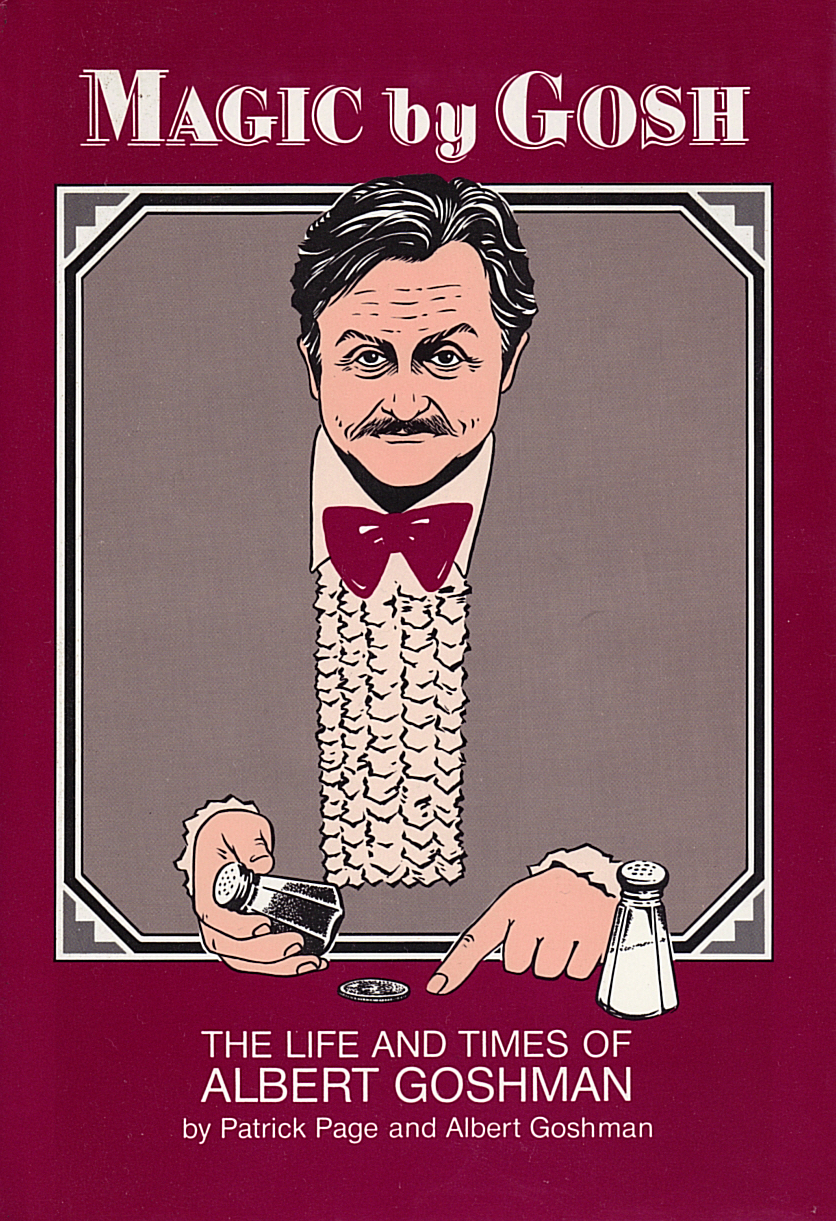 Goshman took the Professor’s advice to heart, and practiced hundreds of hours to perfect a trick named Spellbound. In this classic trick created by Vernon, a copper coin turns silver at the magician’s fingertips. Goshman perfected the routine and made it a thing of beauty. A New York Times reporter attended the Abbott’s magic convention in Colon, Michigan, and wrote an editorial about his experience. Of all the magical wonders on display that weekend, the reporter singled out one as the highlight: a baker who did magic, changing a copper coin into silver.
Goshman took the Professor’s advice to heart, and practiced hundreds of hours to perfect a trick named Spellbound. In this classic trick created by Vernon, a copper coin turns silver at the magician’s fingertips. Goshman perfected the routine and made it a thing of beauty. A New York Times reporter attended the Abbott’s magic convention in Colon, Michigan, and wrote an editorial about his experience. Of all the magical wonders on display that weekend, the reporter singled out one as the highlight: a baker who did magic, changing a copper coin into silver.
When people discuss Goshman today, decades after his death, the first trick mentioned is invariably “the Salt and Pepper Shakers.” Goshman studied the classic T. Nelson Downs routine – FREE AND UNLIMITED COINAGE OF SILVER, first published in The Art of Magic and further detailed by Lewis Ganson in The Dai Vernon Book of Magic. Goshman experimented every night during his six year tenure as the Magic Castle’s house magician, discovering how to make this trick his own. He worked single-mindedly on this theatrical plot until it because synonymous with his name. Today, nobody can perform Goshman’s Salt and Pepper Shakers without acknowledging the originator. He created a “category of one.”
Throughout his professional career, Goshman only performed a limited number of tricks. He did not aim to build an unlimited repertoire. I often see young magicians trying to learn every sleight under the sun, but when it comes time to actually performing a single trick, they freeze up. Their enthusiasm for knowledge overshadows their ability to perform. It is better to master five tricks than to shakily know one hundred.
In my own show, I’ve taken Goshman’s approach and worked on a handful of tricks that I continue to refine over the years. The only way to improve is to keep performing – constantly – and pay attention to your audiences’ reactions. Even after fifteen years of performing certain tricks, I still learn ways to refine the language or handling to improve the overall routine.
YOU ARE THE MAGIC
Many magicians agree that Goshman had one of the best close-up magic acts of all time, hands down. What made him unique?
If, as we’ve discussed, he was performing traditional magic (coins across, sponge balls, a Benson Bowl routine), what was it that made him stand out? Yes, he had refined his manipulative skill and misdirection timing to immense heights, but it was more than that.
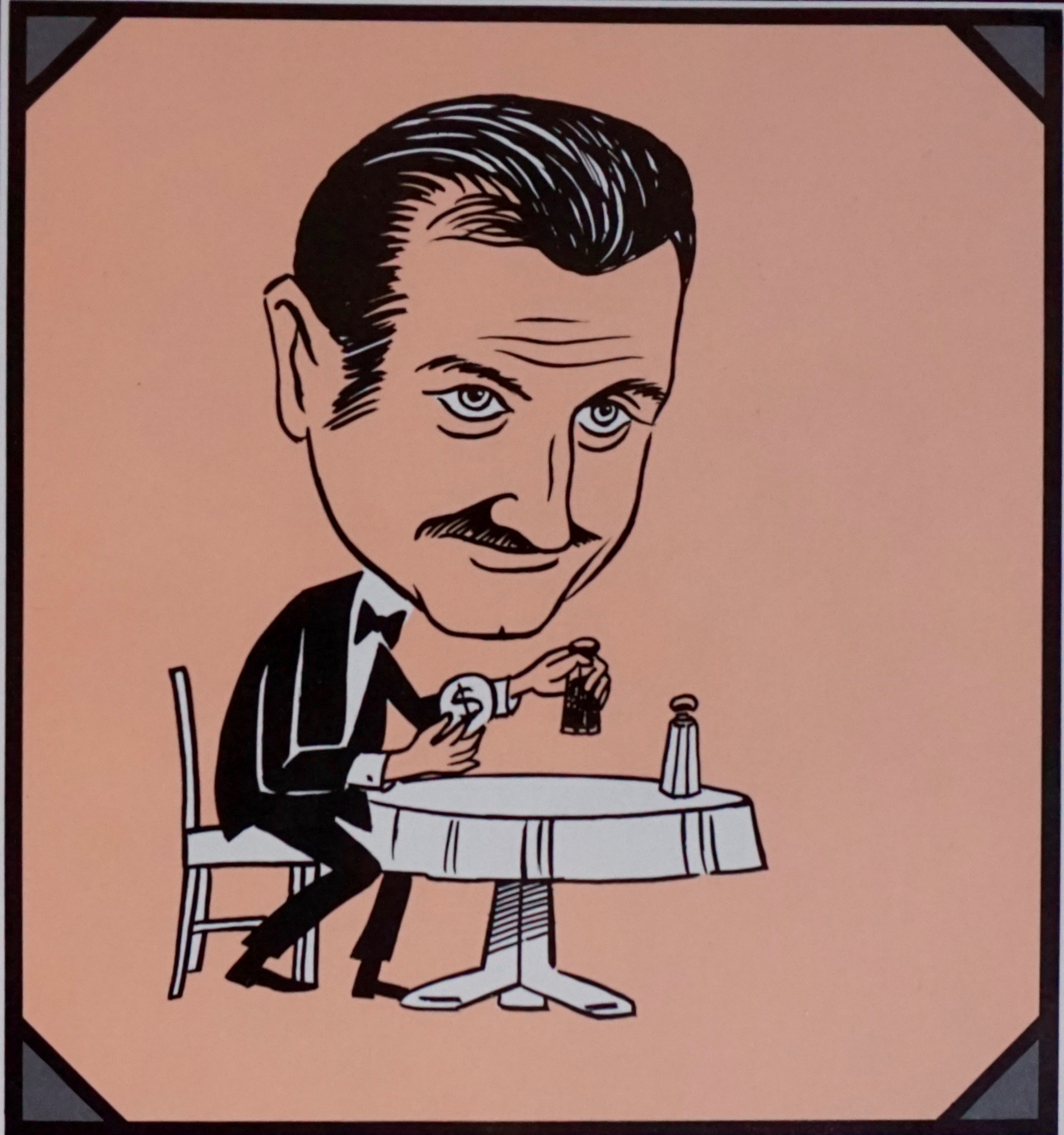
Caricature by Ted Salter
In his lectures to magicians, Goshman taught: “YOU ARE THE MAGIC.” The size or number of props does not define the size of your show. (His entire act fit inside of a briefcase, incidentally.) Rather, audiences are compelled to like a performer when they connect with him on a human level.
Goshman had overcome many personal obstacles in his life, and earned everything he had the hard way. Magic kept his mind off his misery, and he eventually flourished at it. However, he learned to identify with his audience by looking at them, and wondering what kind of trouble each of them was having. “They became individuals to me instead of an audience,” he said.
This is a revelatory statement that explains why audiences liked him back. According to Goshman, “YOU ARE THE MAGIC. The props only come along for the ride. If you are a strong enough performer it doesn’t matter what you do. You’re selling ‘you.’ That was the greatest discovery I ever made.”
Conclusion:
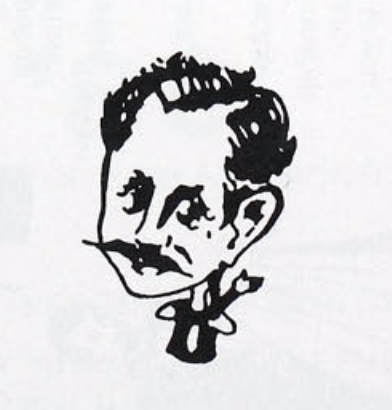 Goshman’s name continues to live on in the magic vernacular through the company he founded, “Magic By Gosh,” the world’s leading manufacturer of sponge balls. All of the product packaging contains Albert’s caricature, as if he personally is giving his blessing for you to entertain with his eponymous props. While Albert is now gone, our only memory for this larger-than-life artist remains through a sampling of YouTube videos and his beloved trademark lines:
Goshman’s name continues to live on in the magic vernacular through the company he founded, “Magic By Gosh,” the world’s leading manufacturer of sponge balls. All of the product packaging contains Albert’s caricature, as if he personally is giving his blessing for you to entertain with his eponymous props. While Albert is now gone, our only memory for this larger-than-life artist remains through a sampling of YouTube videos and his beloved trademark lines:
“Like a mirage that shimmers on the desert’s dust…”
“Say go…. Gone.”
“You expected rubies?”
Next week: MARK SICHER
For further study, I recommend the following books and magazines:
The World’s Greatest Magic, by Hyla M. Clark, 1976, pp. 32-35
Magic By Gosh: The Life and Times of Albert Goshman, by Patrick Page and Albert Goshman, 1985
“King of the Salt and Pepper Shakers,” by John Booth, Linking Ring magazine, September 1990, pp. 69-71
The Albert Goshman Lecture: Live at the Kennedy, DVD, International Magic, 1985
